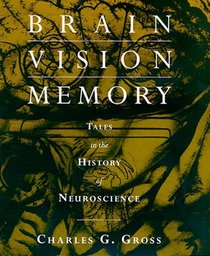Search -
Brain, Vision, Memory: Tales in the History of Neuroscience
Brain Vision Memory Tales in the History of Neuroscience
Author:
"Brain lovers are in for a rare treat: here's a brain book that is filled with historical treasures and is a pure pleasure to read besides. An eminent neuroscientist, the author also turns out to be a master sleuth of forgotten facts as well as a thoroughly entertaining teller of tales." -- Mortimer Mishkin, Laboratory of Neuropsychology, Nation... more »
Author:
"Brain lovers are in for a rare treat: here's a brain book that is filled with historical treasures and is a pure pleasure to read besides. An eminent neuroscientist, the author also turns out to be a master sleuth of forgotten facts as well as a thoroughly entertaining teller of tales." -- Mortimer Mishkin, Laboratory of Neuropsychology, Nation... more »
ISBN-13: 9780262071864
ISBN-10: 026207186X
Publication Date: 3/20/1998
Pages: 280
Rating: ?
ISBN-10: 026207186X
Publication Date: 3/20/1998
Pages: 280
Rating: ?
0 stars, based on 0 rating
Publisher: The MIT Press
Book Type: Hardcover
Other Versions: Paperback
Members Wishing: 1
Reviews: Amazon | Write a Review
Book Type: Hardcover
Other Versions: Paperback
Members Wishing: 1
Reviews: Amazon | Write a Review
Genres:
- Science & Math >> Behavioral Sciences >> General
- Medicine >> Special Topics >> History
- Medicine >> Internal Medicine >> Neurology >> General
- Medicine >> Internal Medicine >> Neurology >> Neuroscience
- Medical Books >> Medicine >> Internal Medicine >> Neurology




